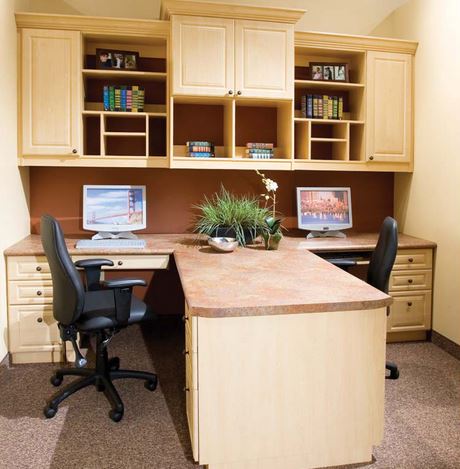 Question #1: Should people be allowed to personalize their offices? If so, how do you “monitor” or “keep control” of the overall appearance?
Question #1: Should people be allowed to personalize their offices? If so, how do you “monitor” or “keep control” of the overall appearance?
A: This question, of course, touches my heart because my answer is based on the philosophy of the Bajaro Method, which holds that everyone needs to live in their own personal expression. It is helpful when everyone has a personalized space in which to function and be productive, since this is where so many of us spend most of our waking hours. Whether we are in an office, showroom, store or vehicle, we need to be comfortable and feel supported in our work space.
Keeping control of this has its challenges; however, it is well worth the exercise because people react differently to colors and styles. Giving people choices such as the colors they want to work in will empower and help them be productive and reach their maximum potential.
Start the process by determining how open the employer is to this concept rather than how much personal expression you want. Next consider if the public is entering your space.
For instance, if you have a private office, it is easy to make a statement with color and style. If you have an open, modular office space you must modify your personal statement to be less conspicuous in your decoration choices, keeping them more subtle.
In a retail business, you might work from an open desk—this is where you might have a picture, personal desk blotter and chair that are meaningful to you. Or a nice vase of flowers or interesting bookends may be your only private statement.
If you are in your vehicle all day, you have lots of opportunity to bring things into your car such as pictures, pillows, blankets, refreshments in special containers, music, motivational tapes or writing materials.
It isn’t necessary for others to notice the items you have chosen to have around you. Try keeping your choices generic enough so as not to offend anyone else who is working with in the same space. Keep things that make you smile tucked away in drawers.
If there are no guidelines in place for items brought from home, you may want to create a company standard. This can be detailed by size, color and subject. I recommend that if anyone objects to a particular item, this is reason enough not to have it there.
Question #2: Why is it that no one pays attention to workplace decorating after the initial move in?
A: This isn’t always true because we react to the layout or decorations we inherit from the previous tenant. In many situations we tend to overlook things we see every day, not realizing their impact.
Often the need to move in may be urgent, giving us little time to “fix it up” before. Then we either get used to seeing the same thing or we are so busy with other things that we forget to pay attention to what bothers us.
Here’s a question for you: What do you look at when you are on the telephone? Most often we stare in a certain direction and spend hours of the day looking at things that may not please us without even realizing this is happening.
It is important to be aware of your surroundings and the effect they have on you.
No matter what space we are in, we are consciously or unconsciously reacting to where we are. Remember, rooms have no feelings, YOU do!
